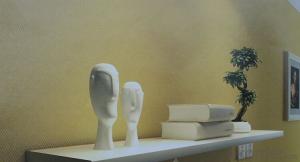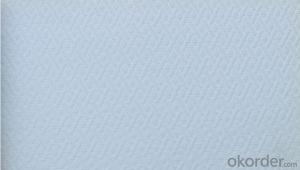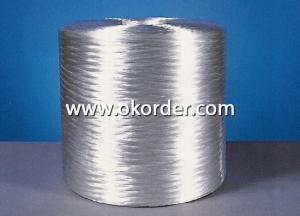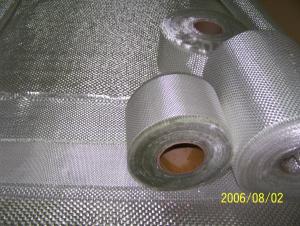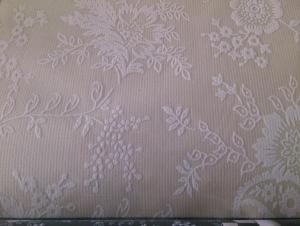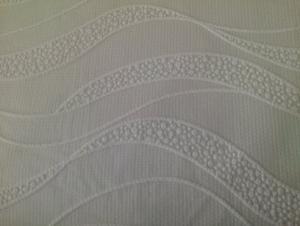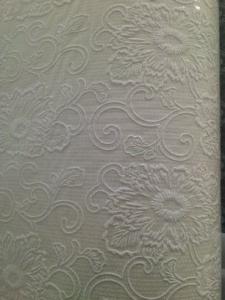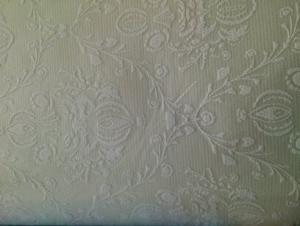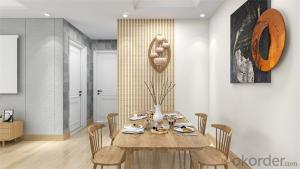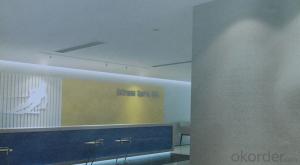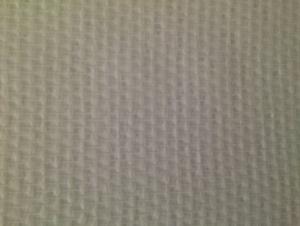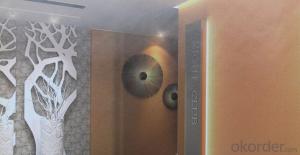Great Fiberglass Wallcovering Cloth 82703
- Loading Port:
- Shanghai
- Payment Terms:
- TT OR LC
- Min Order Qty:
- 100 m²
- Supply Capability:
- 100000 m²/month
OKorder Service Pledge
OKorder Financial Service
You Might Also Like
Great Fiberglass Wallcovering Cloth 82703
Specification of Wallcovering Cloth
.Environment-friendly
.Flame retardent
.Air permeability
.Waterproof
.Anti-corrosion
.Imcomparable strength
.Abundant patterns and colors
.Long life time
Packing Details
.Width:1m
.Length:25/50m
.Each roll of wallcovering cloth is wrapped in a shrinking polythene film,then put in carton
Introduction of wallcovering Cloth
Fiberglass wallcovering cloth,that combines the versatility of paint,from latex to epoxy,with the
strength and benefits of woven fiberglass textile yarns to meet the most demanding wall finish
requirments.Fiberglass textile yarns,as a kind of natural materials,are woven into various textures
and patterns and then treated with a natural starch binder for dimensional stability during the hanging
process.
Compared with traditional wall papers,fiberglass wall covering cloth has the following advantages:
Environment friendly,Flame Retardant,Air Permeability,Shock Resistance,Waterproofing,Anti-corrosion,Abundant Colors&Patterns.
Product Show
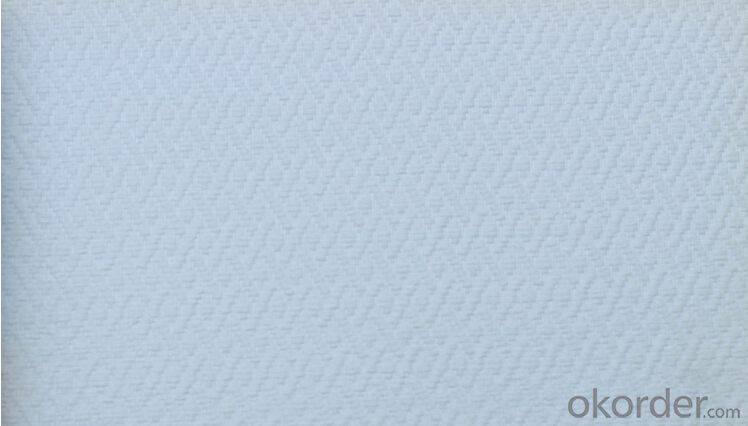
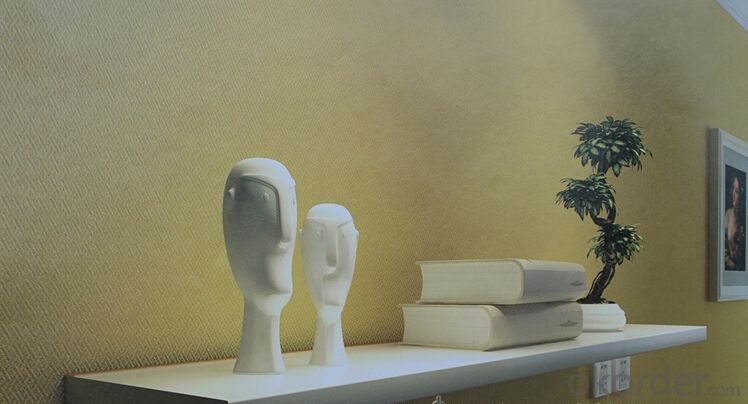
Application of Wallcovering Cloth
As a high-tech indoor decorating material,fiberglass wallcovering cloth is widely used in resident homes,
offices and shops and even cinemas,theatres,hotels and hospital faclilties,air ports,office buildings,shopping centers and schools.
Test Report
Our product has passed test by SGS as follows:
EN 12956:for determination of dimensions,straightness,spongeability and washability.
EN 12149:for determination of magration of heavy metals and certain other elements,of
vinyl monomer and of formaldehyde release.
EN 20105-B02:light solidity.
Our products had passed test of Fire Retardancy M1 Class by LINE
- Q:Does fiberglass wallcovering cloth have any odor or off-gassing?
- Fiberglass wallcovering cloth is known for its lack of odor or off-gassing. This is due to the inert nature of fiberglass, which means it does not emit any harmful chemicals or volatile organic compounds (VOCs) into the air. Nevertheless, it should be acknowledged that certain adhesives or paints used during installation may possess their own odor or off-gassing characteristics. Consequently, it is advisable to opt for low-VOC adhesives and paints when applying fiberglass wallcovering cloth to maintain optimal indoor air quality.
- Q:Can fiberglass wallcovering cloth be used in conjunction with decorative mirrors or glass panels?
- Fiberglass wallcovering cloth is a suitable option when it comes to combining it with decorative mirrors or glass panels. This versatile material can be applied to walls, creating a smooth and long-lasting surface. It also serves as a supportive and stable backing for decorative mirrors or glass panels. Moreover, the lightweight and flexible nature of fiberglass cloth make it effortless to apply to curved or irregular surfaces. In addition, fiberglass is resistant to moisture and mildew, making it a practical choice for high-humidity areas like bathrooms or kitchens. In conclusion, the utilization of fiberglass wallcovering cloth alongside decorative mirrors or glass panels can greatly enhance the overall design's aesthetic appeal and durability.
- Q:Can fiberglass wallcovering cloth be used in historical buildings?
- Yes, fiberglass wallcovering cloth can be used in historical buildings. Fiberglass wallcovering cloth is a durable and flexible material that can provide a range of benefits in historical buildings. It can be used to repair and reinforce damaged or deteriorated walls, helping to restore the structural integrity of the building. Additionally, fiberglass wallcovering cloth can be applied over existing wallcoverings, such as plaster or wallpaper, to create a smooth and even surface for painting or further decoration. This can help to preserve the historical character of the building while also providing added protection against future damage. However, it is important to consult with preservation experts and follow appropriate guidelines and techniques to ensure that the use of fiberglass wallcovering cloth is in line with the historical significance of the building and does not compromise its authenticity.
- Q:Can fiberglass wallcovering cloth be used in high-temperature environments?
- High-temperature environments are not suitable for fiberglass wallcovering cloth. Despite fiberglass being fire-resistant, the cloth made from it has limitations in terms of withstanding high temperatures. Typically, this type of wallcovering cloth is meant for use in normal room temperature settings and should not be exposed to extreme heat or direct flames. In such environments, there is a possibility for the fiberglass wallcovering cloth to melt, warp, or emit toxic fumes, which can be dangerous. To ensure the safety and durability of the wallcovering, it is advised to opt for heat-resistant materials specifically designed for high-temperature environments.
- Q:Can fiberglass wallcovering cloth be used in soundproofing applications?
- Yes, fiberglass wallcovering cloth can be used in soundproofing applications. Its dense and fibrous composition helps to absorb and dampen sound waves, reducing noise transmission through walls and other surfaces.
- Q:Is fiberglass wallcovering cloth resistant to fading?
- Indeed, the fiberglass wallcovering cloth possesses resistance to fading. Renowned for its outstanding durability and ability to withstand diverse environmental elements, including fading, fiberglass showcases inherent properties that render it impervious to the detrimental effects of UV rays. As the primary culprits behind fading in numerous substances, these rays pose no threat to fiberglass. Consequently, spaces basking in abundant natural light or enduring direct exposure to sunlight would greatly benefit from the selection of fiberglass wallcovering cloth, as it guarantees a prolonged retention of its vibrant hue and pristine appearance unlike alternative materials.
- Q:Does fiberglass wallcovering cloth reduce noise transmission?
- Yes, fiberglass wallcovering cloth can help reduce noise transmission. Due to its dense and fibrous nature, it absorbs sound waves, preventing them from bouncing off walls and causing echoes. This can effectively minimize noise transmission and create a quieter environment.
- Q:Can fiberglass wallcovering cloth be applied over existing wallpaper?
- Indeed, it is possible to apply fiberglass wallcovering cloth over existing wallpaper. Nevertheless, it is crucial to acknowledge that the existing wallpaper must be in optimal condition and securely attached to the wall. If the wallpaper is peeling or damaged, it is advisable to eliminate it prior to applying the fiberglass cloth. Moreover, any loose or raised seams should be reattached or fixed before the cloth is applied. By applying the fiberglass cloth over existing wallpaper, one can enhance the wall surface's durability and strength, while also concealing any flaws or texture from the previous wallpaper.
- Q:Can fiberglass wallcovering cloth be used on uneven surfaces?
- Fiberglass wallcovering cloth is indeed applicable on surfaces that are not uniform. Its flexibility and thickness enable it to adapt to the wall's shape, even if it lacks perfect smoothness or evenness. Moreover, the cloth's texture imparts added strength and durability to the wall, rendering it suitable for uneven surfaces. Nevertheless, it is worth mentioning that prior to applying the fiberglass wallcovering cloth, it is crucial to smooth out or repair any notable bumps or protrusions on the wall, in order to achieve optimal results.
- Q:Can fiberglass wallcovering cloth be removed without damaging the walls?
- Removing fiberglass wallcovering cloth can typically be done without causing damage to the walls if it is approached with care and the correct tools and techniques are utilized. To ensure safe removal, follow these steps: 1. Prioritize area preparation: Clear the room of any furniture or obstacles that may hinder the removal process. Lay down drop cloths or plastic sheeting to safeguard the floor and any remaining surfaces. 2. Moisten the surface: Thoroughly wet the fiberglass cloth using a sponge or sprayer. This will facilitate the loosening of the adhesive, making it easier to remove. 3. Score the surface: Utilize a scoring tool or utility knife to create small punctures or cuts in the fiberglass cloth. This will enable the water to penetrate and further weaken the adhesive. 4. Peel off the cloth: Begin removing the fiberglass cloth from a corner or edge, gently peeling it away from the wall. If needed, utilize a putty knife or scraper to assist in lifting it. Proceed cautiously and avoid exerting excessive force to prevent damage to the underlying wall. 5. Eliminate residual adhesive: Once the cloth is removed, there may be adhesive residue remaining on the walls. Use a wallpaper removal solution or a mixture of warm water and vinegar to soften the adhesive. Gently scrape it off with a putty knife or employ a sponge to wipe it away. 6. Clean and repair the walls: After the removal of the cloth and adhesive, clean the walls with a mild detergent and water to eliminate any remaining residue. Inspect the walls for any damage or imperfections and repair them as necessary before applying a new wallcovering or paint. It is important to acknowledge that the ease of removal may vary depending on the specific type and quality of the fiberglass wallcovering cloth, as well as the condition of the underlying wall surface. If you are uncertain or concerned about potential damage, it may be advisable to seek professional assistance.
1. Manufacturer Overview |
|
|---|---|
| Location | |
| Year Established | |
| Annual Output Value | |
| Main Markets | |
| Company Certifications | |
2. Manufacturer Certificates |
|
|---|---|
| a) Certification Name | |
| Range | |
| Reference | |
| Validity Period | |
3. Manufacturer Capability |
|
|---|---|
| a)Trade Capacity | |
| Nearest Port | |
| Export Percentage | |
| No.of Employees in Trade Department | |
| Language Spoken: | |
| b)Factory Information | |
| Factory Size: | |
| No. of Production Lines | |
| Contract Manufacturing | |
| Product Price Range | |
Send your message to us
Great Fiberglass Wallcovering Cloth 82703
- Loading Port:
- Shanghai
- Payment Terms:
- TT OR LC
- Min Order Qty:
- 100 m²
- Supply Capability:
- 100000 m²/month
OKorder Service Pledge
OKorder Financial Service
Similar products
New products
Hot products
Related keywords
